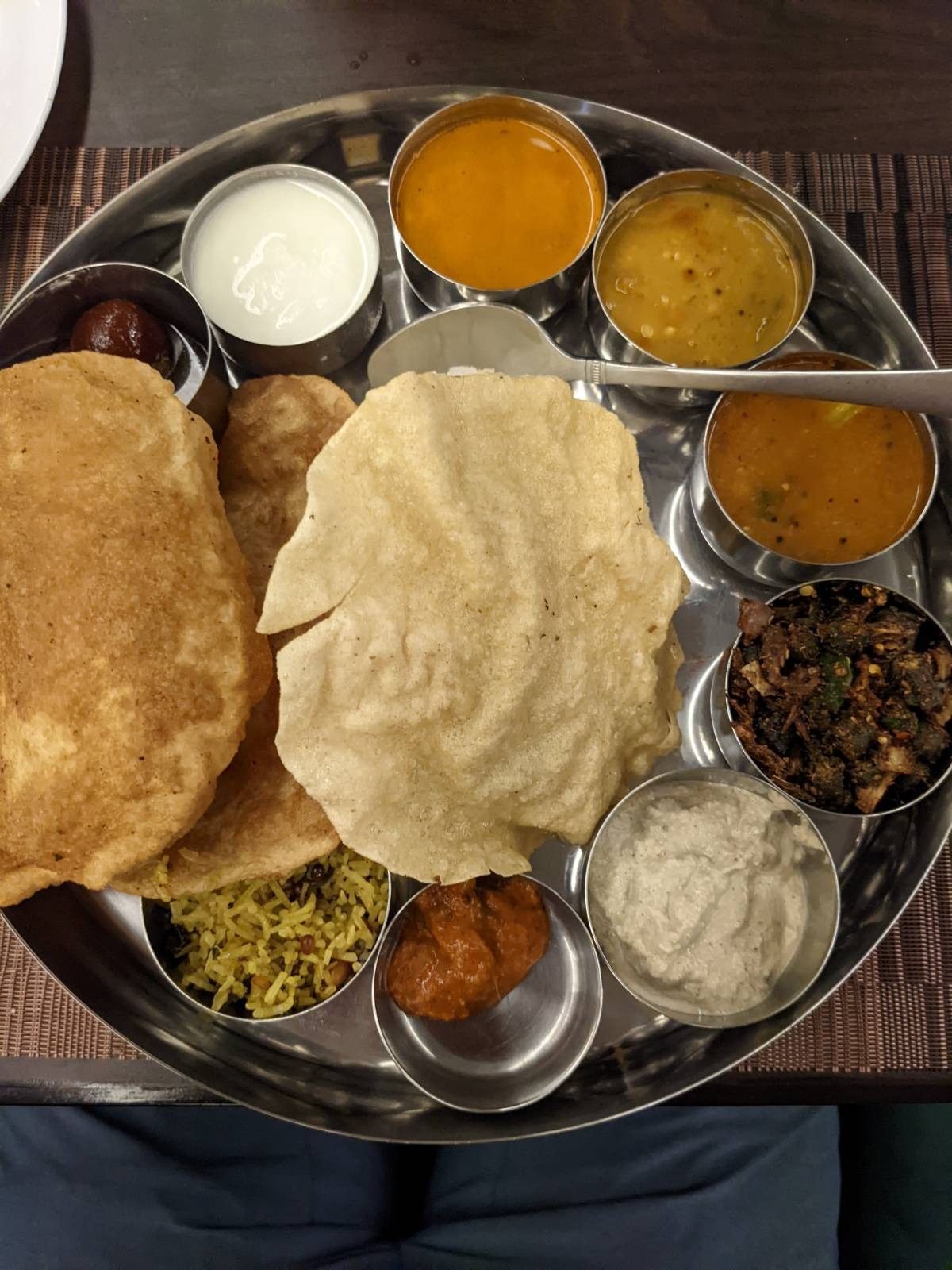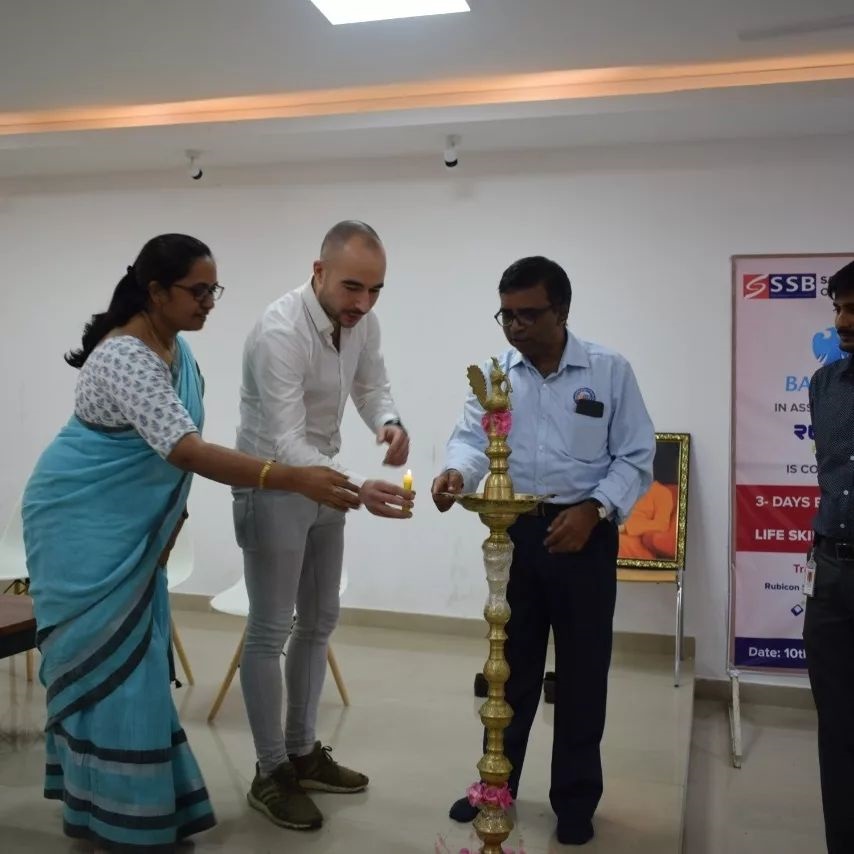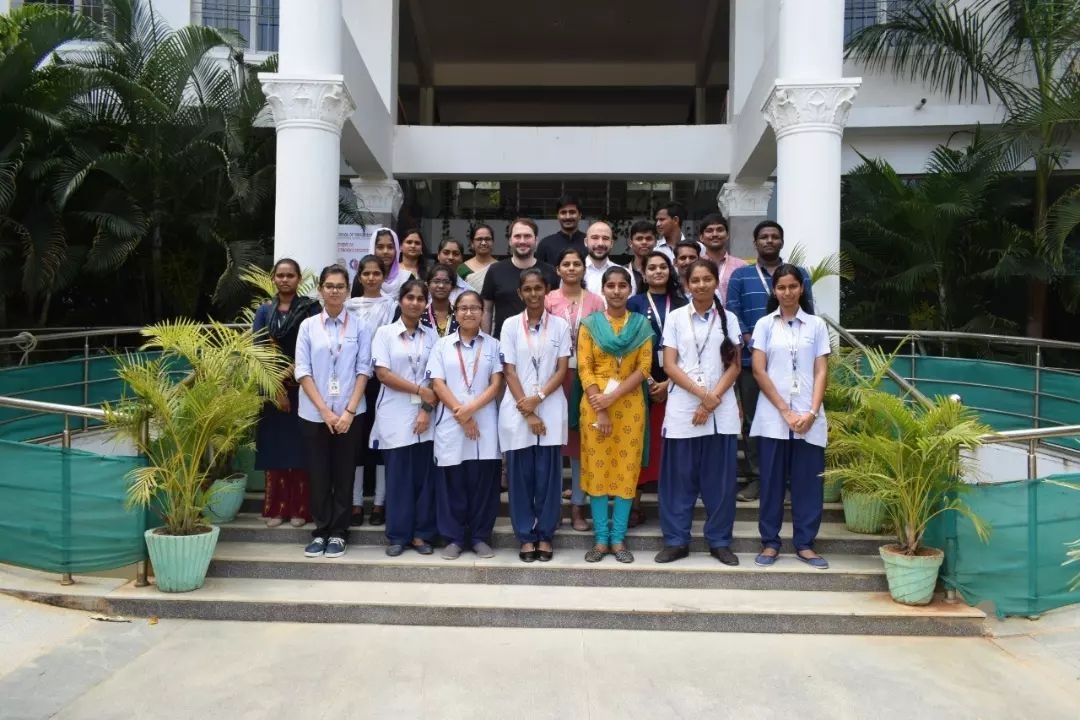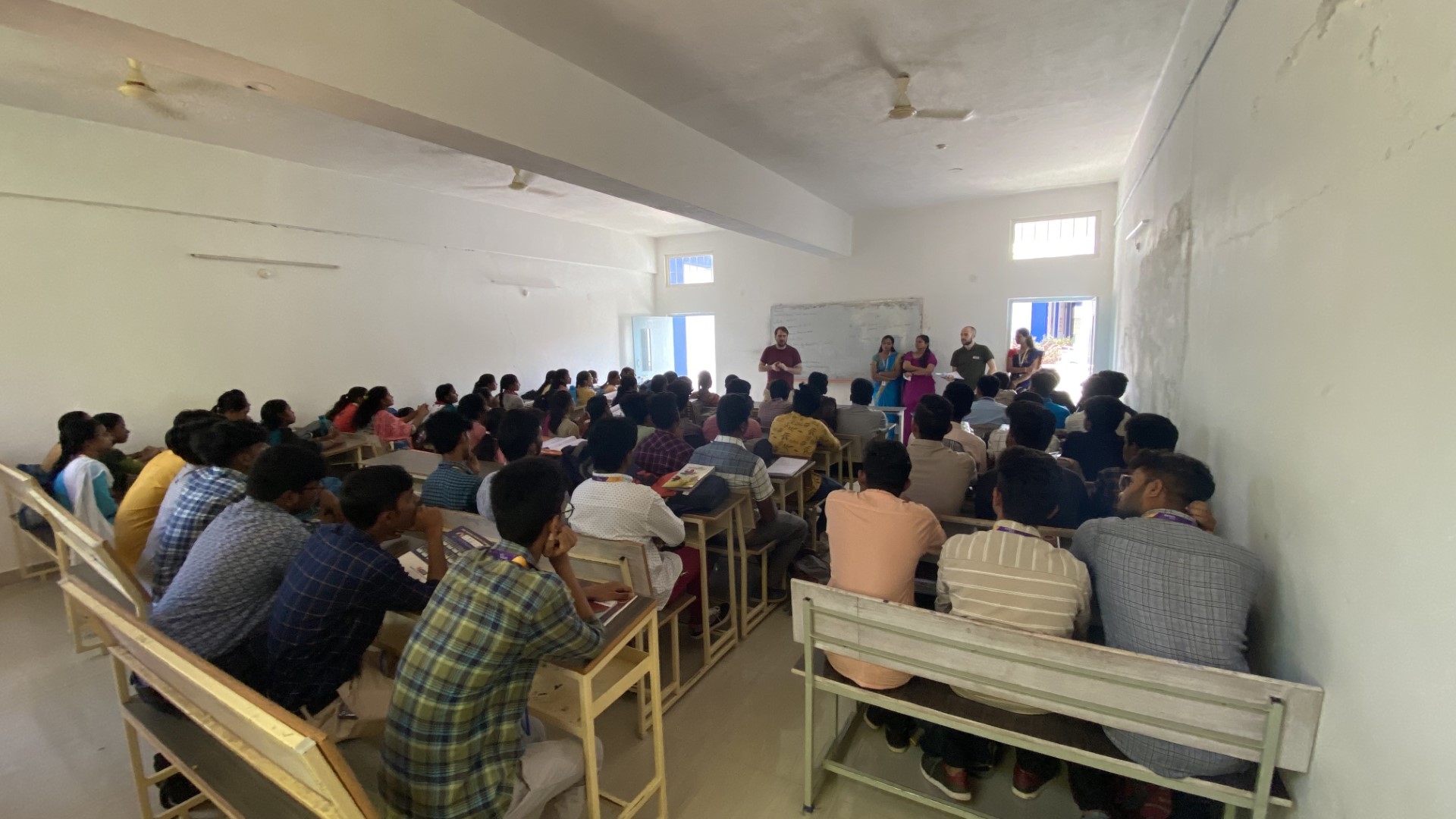One month teaching in India
Background
The idea
Currently I am studying Business Informatics at the TU Wien (Vienna University of Technology) and for my bachelor thesis with the current title “Enhancing the Resilience of Software Engineering Courses by Implementing Continuous Education using Smartphones exemplified by rural India” I created and taught a course for software engineering at a rural college in Andhra Pradesh, India in 2021. Due to the COVID-19 pandemic, and the safety measures like college closures, the whole setting for the course was entirely remotely. So I was sitting at home in Vienna while the students joined from their homes mostly in Andhra Pradesh. A huge challenge was to include all students, because only 54.5% of the students own a personal device like a laptop or desktop computer. Out of those students, 44.4% had to share their devices with family members or friends. The rest of the students had only a smartphone available for learning, practicing, and joining classes. To include all students, the software engineering course was created in a way that also students with only a smartphone can participate in all activities like learning, practicing, joining classes, and submission reviews.
Course overview
The software engineering course currently consists of four modules. Module 1 is designed for students of the 1st year, Module 2 for students of the 2nd year, Module 3 for students of the 3rd year, and Module 4 for students of the 4th year. Students begin with learning how to use the keyboard properly using TypingClub and about concepts of computer programming using Scratch. In the second Module students begin with basic concepts of Java programming using practical assignments together with the the Java course from Sololearn. During the third Module, students will learn concepts about object-oriented programming in Java and will create their first bigger Java application during three iterations à one month each. Additionally students will learn the basics of HTML, CSS and JavaScript using practical assignments and courses from Khan Academy. In the fourth Module students will learn basics of software architecture and how to use a SQL database to store and retrieve data in Java. During this module, students will have to work together in a two to three person team and use git together with GitHub to share their code.
Conducting the course
For making learning material available and students submissions Moodle was used. Moodle is responsive and adapts to the screen size of the students’ devices. For the Java assignments students used the Android application Java N-IDE. For the HTML, CSS and JavaScript assignments students used the Android application Spck Code Editor. Both applications work entirely without any active internet connection. After completing the assignments, students submitted the Java files to Moodle and the HTML, CSS and JavaScript files to the web application trinket.io. trinket.io could also be used, but since Spck Code Editor did not require any active internet connection, students preferred Spck Code Editor. Zoom was used to conduct online classes and also for submission reviews with the students about their submitted Java, HTML, CSS and Javascript code. The online classes were recorded and uploaded to YouTube. The reason for recording and uploading online classes, was because sometimes students were not able to join the classes due to technical issues like powercuts, bad or no internet connection, or personal problems. Another reason is, that most mobile internet data subscriptions of the students are limited to about 2GB per day, and they have to participate in online classes nearly all day long. Additional videos in which concepts of Java programming was explained were also recorded using OBS and uploaded to YouTube.
Currently
I arrived at the Bengaluru International Airport in India on the 23rd of March 2022. The first experiences in India were a three hours journey through the outskirts of Andhra Pradesh in the middle of the night to the place of the college and a really nice and heartly welcoming ceremony where I had the chance to meet and talk to the students for the first time which I only met during remote sessions last year.
After a long time struggling to adjust to the new environment, especially wearing formal clothes during the Indian summer and being so far away from home for the first time, finally the classes started. Right now, I am teaching two classes of students which are currently doing their BTech in Computer Science and Engineering at a college in rural Andhra Pradesh in their 3rd and 4th year. During my first week teaching, Paul visited and helped me to prepare everything, to introduce me to everybody, and to kickstart the new semester.
Since there was a break for new students to join the software engineering course due to the COVID-19 pandemic, we planned to continue the course with students of the 1st year. During Paul’s visit, we also conducted the entry assignment for the 1st year students of the college. Out of 66 students, we will start the first module of the software engineering course with 16 students.
Besides that, currently classes for Module 3 and Module 4 are conducted once a week à three hours each. The biggest challenges at the moment are that often students are missing classes because various festivities are going on and students often are involved in helping organizing those festivities. Sometimes students also have to leave to participate in interviews with companies for internships. Luckily currently there are no school closures and we can use the computer lab during the classes. Mostly the internet is available, but sometimes there is also either very slow or no internet connection at all. Powercuts happen, but very rarely at the moment. Students told me during the rainy season it will get worse, but let’s see. The biggest challenge for students without a personal laptop or desktop computer is that the internet in the computer lab is only available during the classes. When there are no classes, the internet will be disabled. A possible solution could be to show students how to use USB tethering to access the internet on the computer, but then again they have to use data of their own mobile data subscription. Nevertheless, the classes are going on and me as well as the students are really motivated to continue teaching and learning with or without those challenges. I will keep you up to date in the next blog post in about a month.



